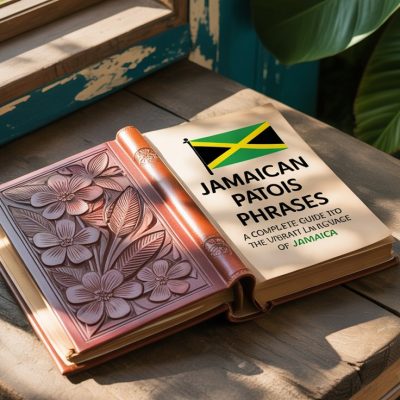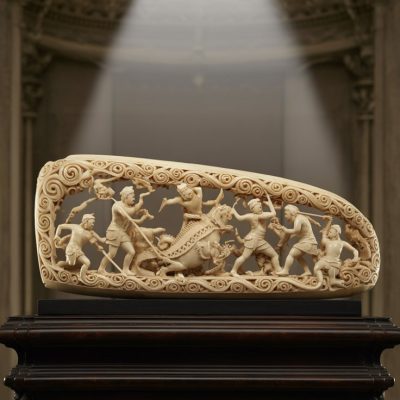Introduction
Have you noticed how, each March, cities and streets seem to glow with a vibrant shade of green? Streets are filled with parades, people wear shamrocks, and Irish tunes echo through pubs and city squares. That’s the magic of St. Patrick’s Day—a celebration of culture, faith, and joy that unites millions across the globe.
With St. Patrick’s Day 2026 just around the corner, people are already wondering: How will it be celebrated this time? From traditional Irish feasts to modern parades in New York, Chicago, and Dublin, the day brings a blend of heritage and festivity that feels like painting the town green.
In this guide, we’ll explore all the essential things you should know about St. Patrick’s Day. Patrick’s Day 2026—its history, traditions, upcoming parades, food, music, and how you can celebrate no matter where you are. Think of it as your ultimate travel and culture guide, sprinkled with stories, tips, and insights to help you enjoy the festival to the fullest.
History of St. Patrick’s Day
St. Patrick’s Day dates back more than a thousand years. At first, the day wasn’t about parades or pints—it began as a sacred feast honoring Ireland’s patron saint. Families gathered for church, shared meals, and celebrated their roots. As Irish people settled around the world, the celebration blossomed into an international festival of culture.
Who Was St. Patrick?
St. Patrick wasn’t actually Irish by birth. Born in Britain in the late 4th century, he was kidnapped by pirates and brought to Ireland as a slave. After escaping, he returned years later as a Christian missionary, spreading faith and uniting people. Legends credit him with using the shamrock to explain the Holy Trinity, which is why the plant remains such a powerful symbol today.
Why Do We Celebrate on March 17?

March 17 marks the day St. Patrick passed away in 461 AD. The date was chosen to honor his life and contributions. What started as a solemn religious remembrance grew into one of the world’s biggest cultural celebrations.
Global Spread of St. Patrick’s Day
Thanks to Irish immigrants, St. Patrick’s Day became a festival that transcends borders. These days, parades light up cities across the globe, from New York and Sydney to London, Tokyo, and even Buenos Aires. The holiday isn’t limited to the Irish anymore—it’s for everyone who loves music, culture, and a good celebration.
St. Patrick’s Day 2026 Date and Significance
In 2026, St. Patrick’s Day falls on Tuesday, March 17. Being a weekday doesn’t dampen the spirit—cities will still host weekend-long events leading up to the big day. Expect parades, green-lit landmarks, and gatherings across the world.
Popular Symbols of the Celebration
-
Shamrock: Represents faith and Irish pride.
-
Leprechaun: A mischievous fairy in Irish folklore.
-
Green Color: Symbolizes spring, Ireland’s lush landscapes, and good luck.
-
Pot of Gold: Represents fortune and playful myth.
-
Celtic Knots and Harps: Cultural reminders of Ireland’s rich traditions.
Traditional Irish Food and Drinks
What’s a celebration without food? On St. Patrick’s Day 2026, expect to see tables filled with:
-
Corned beef and cabbage – a classic Irish-American favorite.
-
Irish stew – hearty with lamb, potatoes, and carrots.
-
Soda bread – baked with buttermilk and raisins.
-
Shepherd’s pie – comfort food at its finest.
-
Irish coffee and Guinness – drinks that add warmth and spirit.
Food on this day is more than a meal—it’s a way to connect with heritage and share stories with family and friends.
Music and Dance on St. Patrick’s Day
Irish music is full of energy and heart. Picture fiddles, tin whistles, and bodhráns (traditional drums) playing lively tunes while people dance jigs and reels. In 2026, many pubs, theaters, and public squares will host live performances that capture the soul of Irish culture.
Famous Parades Around the World in 2026

Some parades are so iconic, they attract tourists from across the globe:
-
The New York City Parade is the largest of its kind, bringing together more than 150,000 participants
-
Dublin Parade – where it all began, blending tradition and modern performances.
-
Chicago River Dyeing – turning the river bright green, a breathtaking spectacle.
-
Boston Parade – rooted in deep Irish-American history.
-
London Parade – mixing floats, music, and multicultural performances.
How Cities Celebrate: Dublin, New York, Chicago, and More
Each city adds its own twist:
-
Dublin goes all out with a week-long festival.
-
New York showcases marching bands, dancers, and bagpipes.
-
Chicago dyes its river green—a tradition since 1962.
-
Sydney Opera House lights up in emerald.
-
Tokyo blends Japanese culture with Irish flair.
It’s fascinating how one holiday can feel both local and global at the same time.
Creative Ways to Celebrate at Home
Not traveling? No problem. Here’s how to make St. Patrick’s Day 2026 special from your own home:
-
Cook a traditional Irish meal.
-
Host a virtual trivia game about Irish culture.
-
Play Irish music and learn a simple jig.
-
Decorate with shamrocks, fairy lights, and green crafts.
-
Try baking shamrock-shaped cookies with the kids.
Family-Friendly Activities
Children love the playful side of St. Patrick’s Day. You can organize:
-
Treasure hunts with “pots of gold” chocolate coins.
-
DIY leprechaun traps to spark creativity.
-
Storytime featuring Irish myths and folklore.
-
Craft workshops with shamrocks and rainbows.
This way, even the youngest family members join the fun.
The Role of Faith and Religion
At its core, St. Patrick’s Day is still a religious holiday. Countless people take part in church services to pay tribute to St. Patrick. Patrick’s legacy. In Ireland, it’s both a national holiday and a spiritual reminder of faith and resilience.
Modern vs. Traditional Celebrations

Today, the holiday balances between faith and fun. While some prefer quiet gatherings and church services, others enjoy parades, pub crawls, and concerts. The beauty of St. Patrick’s Day lies in its flexibility—you can celebrate it your way.
Looking Ahead: The Future of St. Patrick’s Day
As the world grows more connected, St. Patrick’s Day will likely become even bigger. Technology, social media, and international travel ensure that the traditions keep spreading while adapting to modern times. In 2026, expect not only street festivals but also live-streamed events bringing Irish culture to every corner of the globe.
FAQs
1. When is St. Patrick’s Day in 2026?
In 2026, St. Patrick’s Day will be celebrated on Tuesday, March 17.
2. Why is green the color of St. Patrick’s Day?
Green reflects Ireland’s rolling landscapes, the shamrock, and the timeless symbol of good fortune.
3. What food is commonly eaten on St. Patrick’s Day?
Dishes like corned beef and cabbage, Irish stew, soda bread, and shepherd’s pie are favorites.
4. Are St. Patrick’s Day celebrations only for Irish people?
Not at all! The holiday is celebrated worldwide by people of all backgrounds.
5. What are some fun ways to celebrate at home?
Cooking Irish food, playing music, hosting trivia, and decorating with shamrocks are great ways to celebrate from home.
Conclusion
St. Patrick’s Day 2026 is set to be more than a holiday—it’s a vibrant celebration of culture, togetherness, and joy. Whether you’re walking in a parade, cooking Irish stew, or watching the Chicago River turn green, you’re part of a global family honoring a tradition that began centuries ago.
So, grab your shamrocks, wear your green, and join the world in celebrating St. Patrick’s Day. After all, it’s not just about being Irish—it’s about being part of something bigger, something that makes the world smile together.










